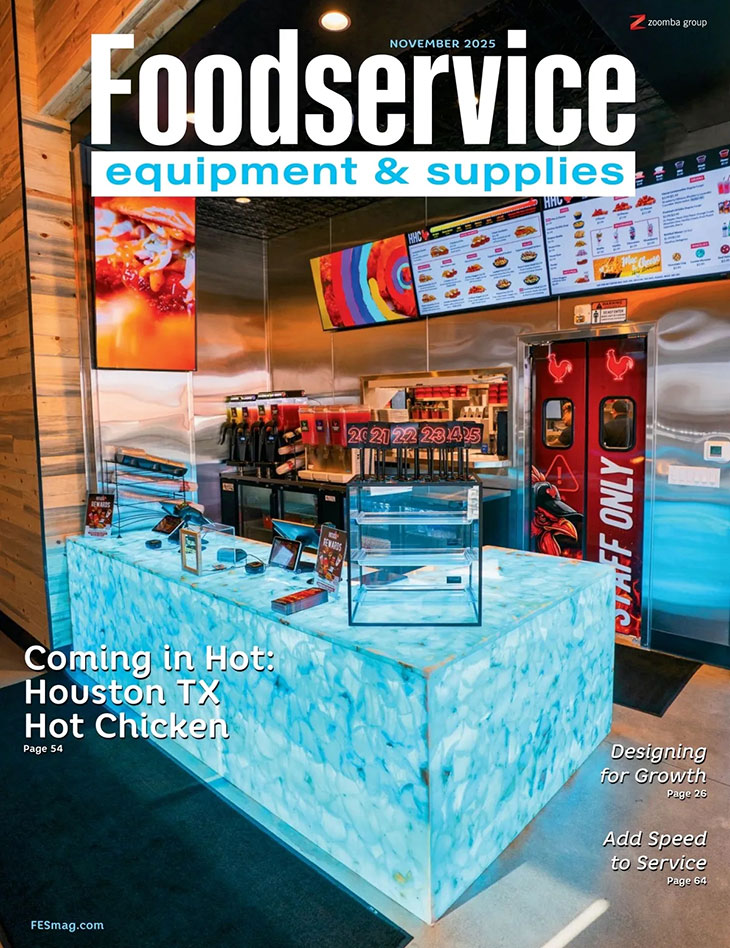Paul Pimentel serves as the second-generation owner of MAP Restaurant Supplies, a family owned and operated full-service distributor that sells everything from smallwares and disposables to heavy equipment.
 Paul Pimentel, CEO, MAP Restaurant Supplies, Newark, N.J.The company also offers limited design-build services and CAD renderings. MAP Restaurant Supplies was ranked No. 71 in the FE&S 2024 Distribution Giants survey with $23 million in annual sales. While Pimentel celebrates the company’s 30th year in business, he is also preparing for future growth. Indeed, his target is to become one of the larger foodservice distributors in the U.S. in his lifetime.
Paul Pimentel, CEO, MAP Restaurant Supplies, Newark, N.J.The company also offers limited design-build services and CAD renderings. MAP Restaurant Supplies was ranked No. 71 in the FE&S 2024 Distribution Giants survey with $23 million in annual sales. While Pimentel celebrates the company’s 30th year in business, he is also preparing for future growth. Indeed, his target is to become one of the larger foodservice distributors in the U.S. in his lifetime.
Q: Over MAP Restaurant Supplies’ 30 years in business, the industry has evolved considerably. What stands out as a significant point of change?
A: The equipment and supplies industry has always kind of been laggard when it comes to technology and technological advancements compared to a lot of other industries. That said, in the last 10 to 15 years, there’s been a significant shift in mindset with the end user to being more open to the idea of internet purchases, which has led to some degradation of brand awareness, whereas in the past, customers were set on buying only from premier brands. And though large internet dealers still experience year-over-year growth, we’re seeing customers returning to the brands and service they have enjoyed.
As a brick-and-mortar dealer, we’re seeing customers willing to pay a bit more to work with us more closely through the life cycle of their applications. Sure, they’ll see competitive prices online and come to us looking for the best price on, say, a two-door refrigerator. But we’ll ask, ‘What’s your application for it? What’s the temperature in your kitchen? How many times are a day are you going to use it? How are you using it?’ They’ve responded well to that level of care — we’re a customer-forward business, not an order-taking business.
Q: What lessons did you learn through the pandemic-influenced challenges that you apply to your business today?
A: We had to learn how to be really nimble and how to react to unforeseen challenges.
We had to use some extra creativity to find other ways to produce revenue. Part of that involved leaning heavily on new and existing relationships with importers overseas to source products directly from factories in the Dominican Republic, China, South Korea and Taiwan to make ends meet during supply chain challenges. We continue to maintain those relationships just to have a strong base of trusted vendors should there be another supply chain situation.
Q: Looking ahead, what will it take for foodservice equipment and supplies dealers to succeed in the next 30, or even 50, years?
A: I wish I had a crystal ball to know what the industry trends are going to be. But with the migration back to brick-and-mortar dealers, I truly believe that our industry is different from others in that it’s very people-first and very technical. Our restaurant owners and operators are really good at what they do day to day, but they might not know the right selection or option or application for certain appliances, and I think that’s where the knowledge of the foodservice professional on the dealer and consultant side remains so important.
We’re going to have to find the right marriage between providing solutions to customers more quickly using technology but also being able to offer premium customer service. The latter is what I would say is our “secret sauce” that has helped propel our business and keep us open for 30 years — and hopefully another 30 to come.



